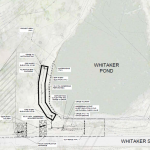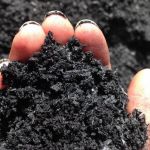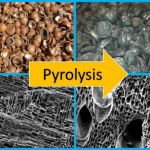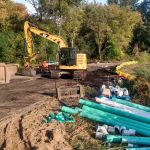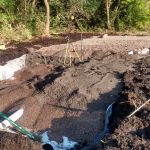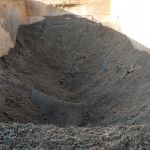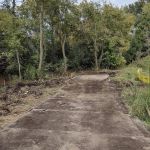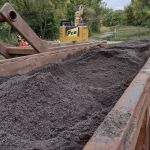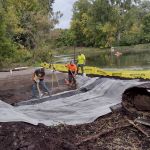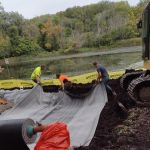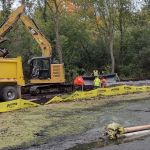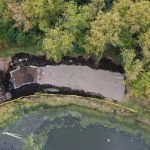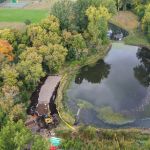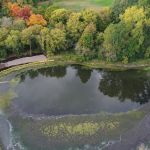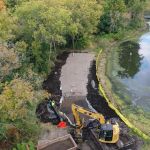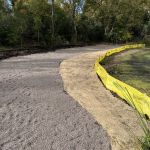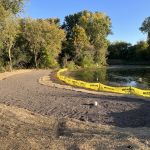Whitaker Pond Biochar Stormwater Filter
Quick Facts:
- Whitaker Pond was built in 1996, with a forebay added in 2010.
- The filter uses a material called biochar. Biochar is a charcoal-like substance made by burning organic material, usually agricultural and forestry wastes. It's commonly used as a soil additive for enhancing structure and water retention, but also acts as a filter.
- The biochar filter system is 1,650 sq ft.
Funding:
- This effort is being funded through two State /Federal Grants.
- Watershed Based Funding from the MN Board of Water and Soil Resources (BWSR).
- US Environmental Protection Agency (EPA) 319 grant funds administered by the Minnesota Pollution Control Agency (MPCA) with a local match funding from VLAWMO.
Reason for project:
- To treat pollutant loading into Lambert Creek.
- Reducing the pollutant impact of the first flush: Nutrients, bacteria, and other debris that wash off surfaces such as parking lots, streets, and lawns in the first several minutes of a rain event. The filter is active during periods of high water when more of these pollutants are moving through Whitaker Pond.
- Lambert Creek is impaired for high bacteria levels during storm events. Bacteria is primarily avian sourced, but also includes canine sources.
- Biochar is an organic material similar to charcoal. It's produced at a high, consistent heat without oxygen. This process is known as pyrolysis. The resulting material has a large surface area that "grabs on" to bacteria and nutrients to remove them from water traveling through the filter.
- Comparable projects have been completed in the Coon Creek and Shingle Creek Watershed Districts: Coon Creek Single Creek
Results:
The filter was completed in Fall 2022 and is followed by a year of monitoring.
The goal of the filter is to improve health of Lambert Creek and by extension East Vadnais Lake.
For more background on how Whitaker Pond has changed over the years, check out the History of Whitaker Pond.
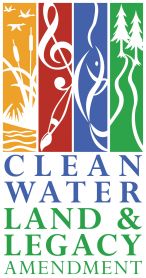
Legislative Coordinating Commission

Project Image Gallery
Search projects
Birch Lake Aquatic Invasive Species Efforts
Efforts to remove Eurasian Watermilfoil and Curly-leaf Pondweed
4th and Otter Woodland Restoration
A woodland restoration at a key location adjacent to Birch Lake in White Bear Lake.
Birch Lake Sand-Iron Stormwater Filter
An iron-enhanced sand filter at the intersection of 4th St. and Otter Lake Road. The filter helps reduce nutrients entering Birch Lake with stormwater runoff.
Birch Lake North Shoreline Restoration
A 150 foot stretch of lakeshore on Birch Lake, in White Bear Lake was improved in the summer of 2010. In 2011-2012, an additional 700 feet of shoreline was restored on either side of the original planting area.
Charley Lake Channel Restoration
The channel between Charley Lake and Pleasant Lake in North Oaks was showing signs of serious erosion.
Deep Lake Channel Restoration
This project will restore approximately 125 feet of shoreline in the Deep Lake Channel, just before it enters Pleasant Lake. The project will be completed in Fall 2015.

